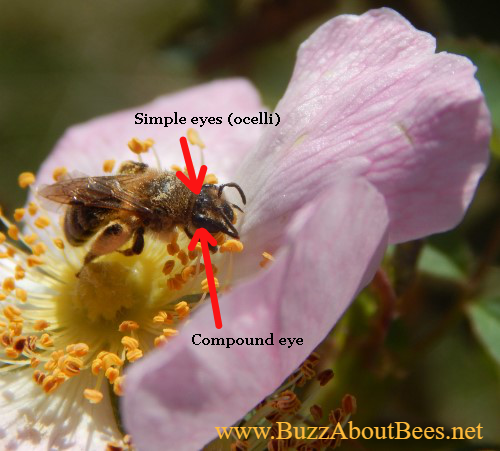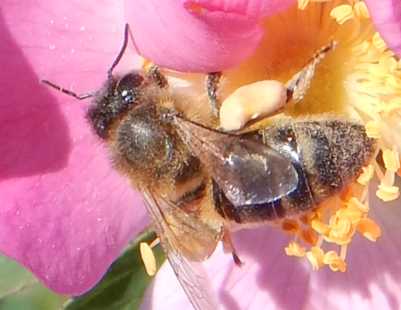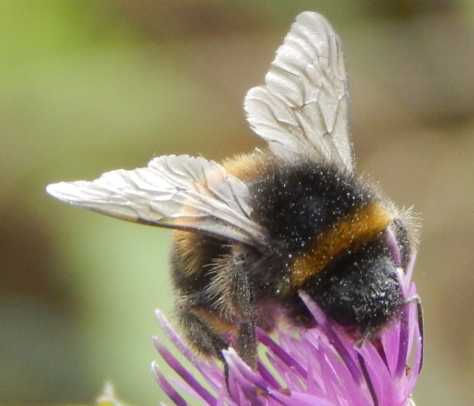Do Bees Have Eyelashes
Scientists have established not only that honey bees have hairy eyes, but also that those hairs have a particular role.
If you have read my page about the hairy eyes of honey bees, you may be interested in whether or not they also have eyelashes.
Do Bees Have Eyelashes?
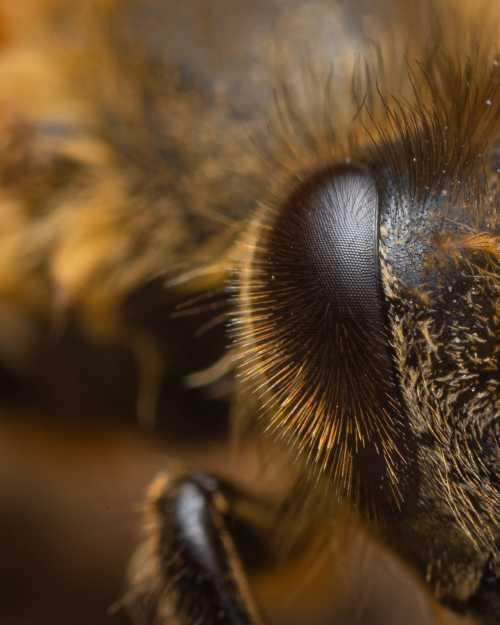 The eye of the honey bee, Apis mellifera showing hairs. But do honey bees have eye lashes too?
The eye of the honey bee, Apis mellifera showing hairs. But do honey bees have eye lashes too?Photograph, with thanks to Isaias Sanchez
To answer this question, we need to define firstly, what an eyelash is as well as its function in humans.
What are eyelashes? Features and characteristics
1. In humans, the eyelashes are specially adapted, curved hairs that line the upper and lower lids of the eye.
2. The hairs are sensitive to external threats to the eye, and stimulate an automatic reflex causing the eyelid to close. Thus, in humans, eyelashes are designed to help protect the eye from harmful dirt and bacteria and other dangers.
3. Each individual eyelash on a human comprises a root and a bulb inside a follicle which is embedded in the eyelid; and the shaft, which is the visible part of the hair.
4. It should be noted that not all hairs on the human body are the same. In fact, even the follicles of lashes on the lower lids are significantly different from those on the upper eyelids1.
The hair on an arm or scalp is quite different from an eyelash. In their 2018 review paper, The eyelash follicle features and anomalies: A review2 Aumond and Bitton inform us that:
- Lashes are embedded into distinct follicles. Lash follicles are connected with glands that secrete substances which are specifically protective of the eye.
- Lashes have their own distinct growth patterns and 'life cycle'.
- Lashes are curved (albeit to differing degrees), regardless of the ethnicity of an individual, and lashes rarely exceed 12mm in length.
- Lashes differ versus other body hairs, for example, in relation to development of pigmentation.
- Scalp hair follicles have tiny muscles that react to emotions such as fear or excitement, resulting in the 'goose-bump effect' of making hairs stand on end. These muscles are not present in eyelash follicles.
Why is this relevant?
It is relevant because it demonstrates that what we call an eyelash is more than merely a simple hair designed to protect the eye.
Eyelashes are located in a specific place (the eyelids) in particular follicles, and the lash hairs themselves have distinct biological features.
Conclusion:
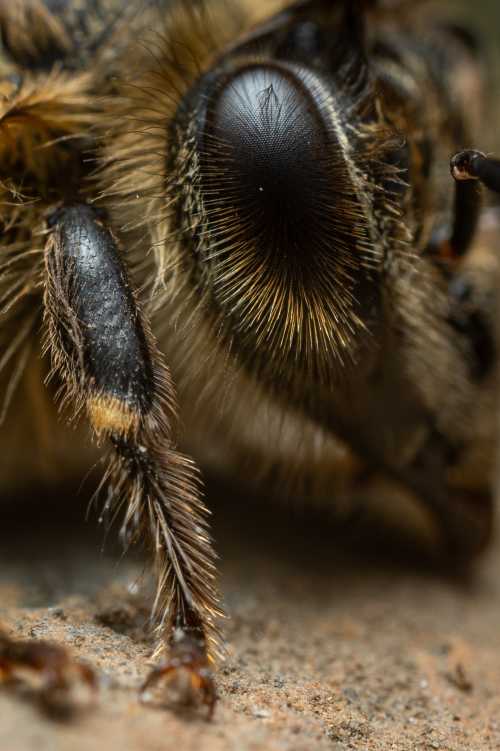 Photograph, with thanks to Isaias Sanchez
Photograph, with thanks to Isaias SanchezI am of the view that bees do not have eyelashes, because:
1. Bees do not have eyelids, and that includes honey bees and sharp-tail bees, despite the hairs on their eyes.
2. Whilst it's true that the hair on the eyes of honey bees are certainly believed to help protect the eye from a build up of sticky pollen, on the other hand, pollen that is collected on the eye hairs can be scraped off using the legs, and used as required by the bee.
In fact, in honey bees, the hair on the eye is believed to perform a useful pollen-collecting role3. Thus its function is different to that of an eyelash in humans.
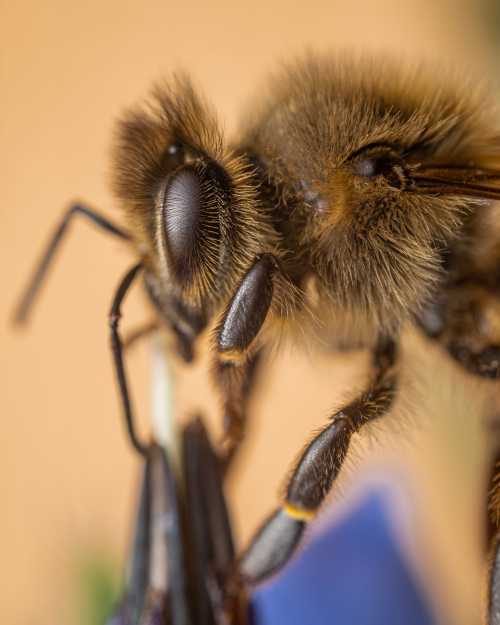 Photograph, with thanks to Isaias Sanchez
Photograph, with thanks to Isaias Sanchez
References
1. Elder MJ. Anatomy and physiology of eyelash follicles: relevance to lash ablation procedures. Ophthalmic Plast Reconstr Surg. 1997 Mar;13(1):21-5. doi: 10.1097/00002341-199703000-00004. PMID: 9076779.
2. Aumond S, Bitton E. The eyelash follicle features and anomalies: A review. J Optom. 2018;11(4):211-222. doi:10.1016/j.optom.2018.05.003
3. Guillermo J Amador, Marguerite Matherne, D'Andre Waller, Megha Mathews1, Stanislav N Gorb and David L Hu : Honey bee hairs and pollenkitt are essential for pollen capture and removal; March 2017; IOP Publishing Ltd - Bioinspir. Biomim. 12 026015.
